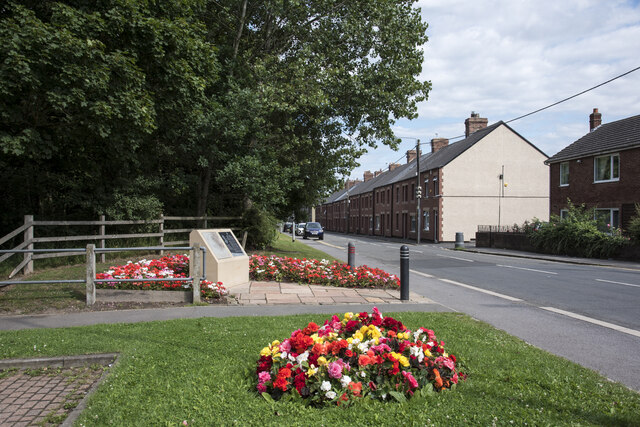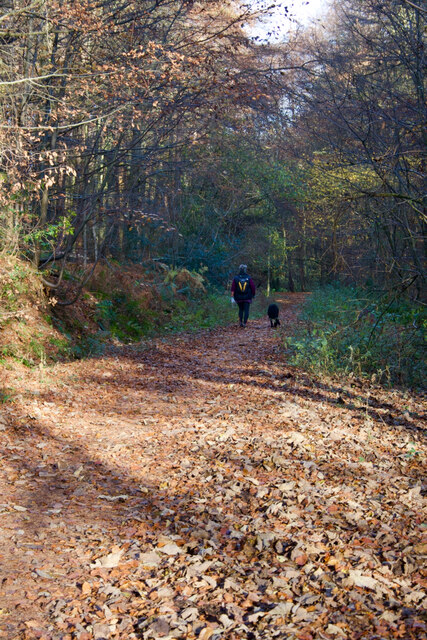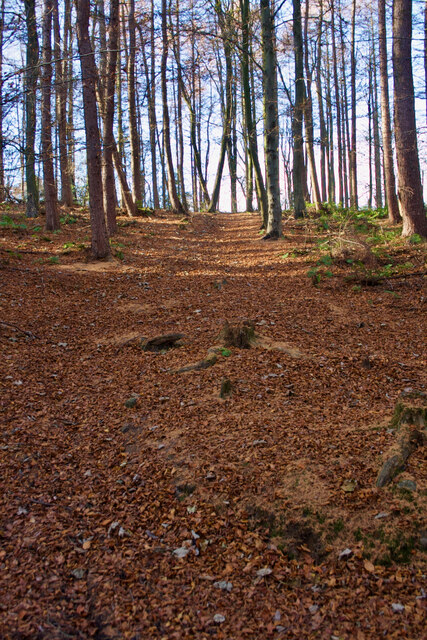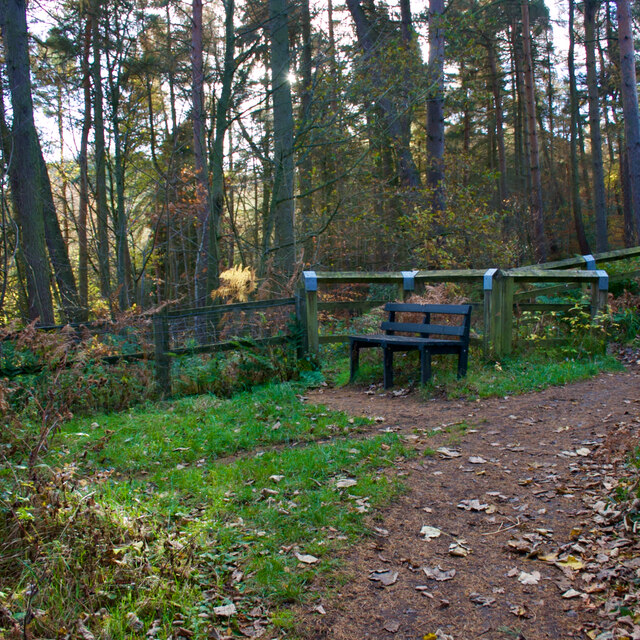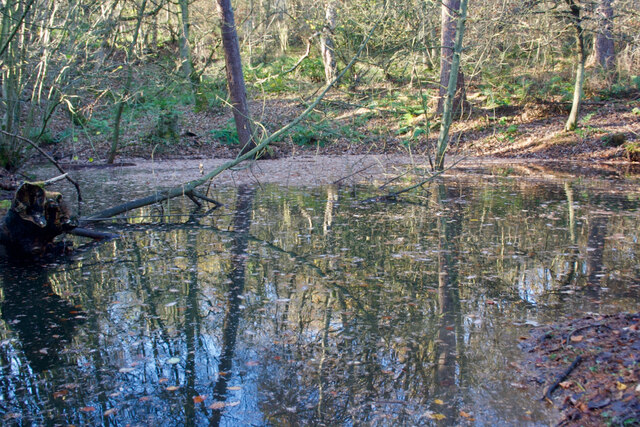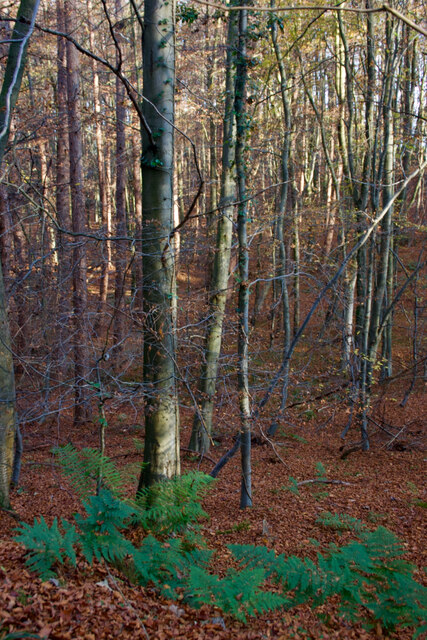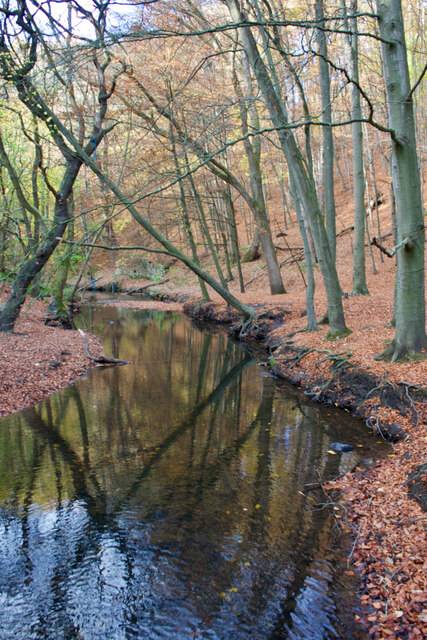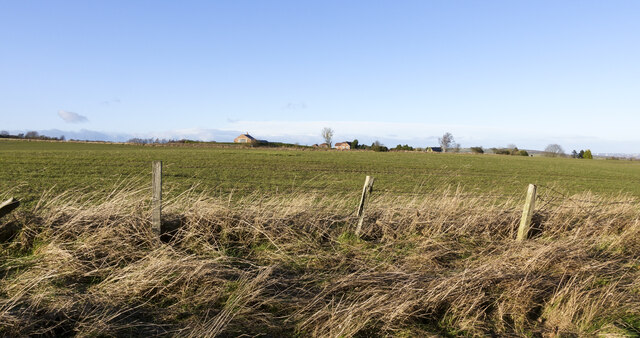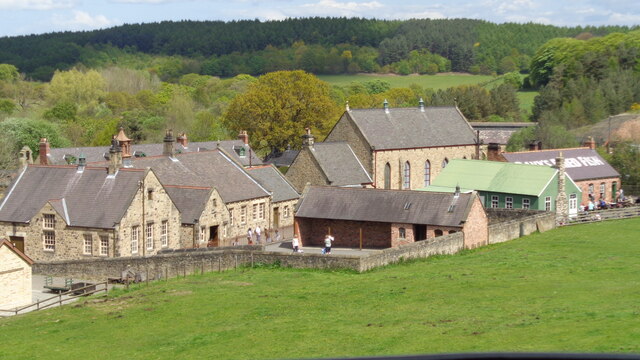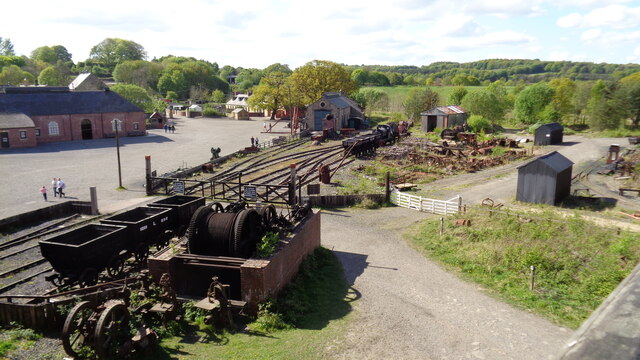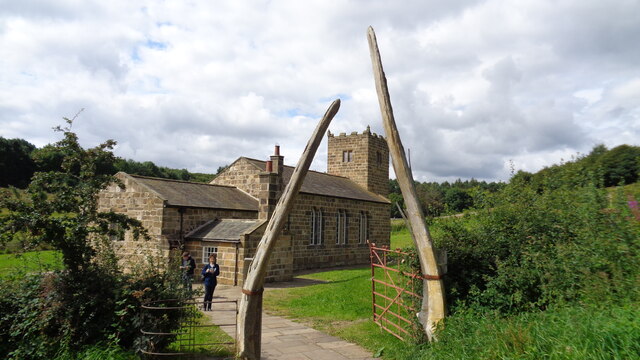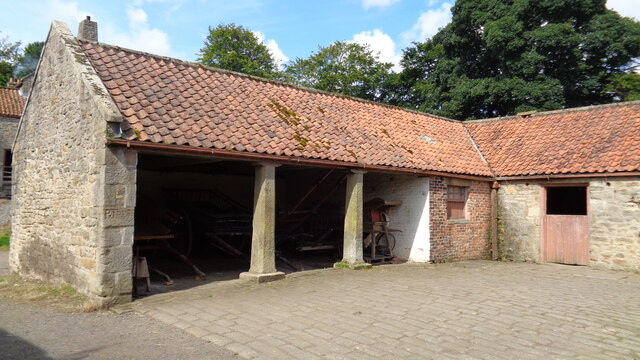Actondene Wood
Wood, Forest in Durham
England
Actondene Wood
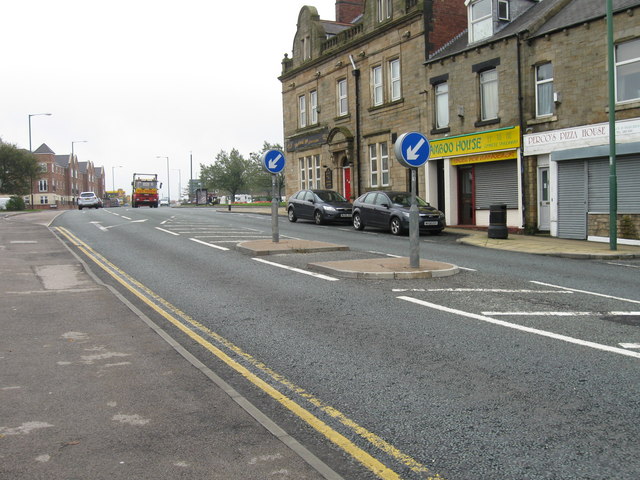
Actondene Wood is a picturesque woodland located in County Durham, England. Covering an area of approximately 200 acres, this enchanting forest is a haven for nature lovers and hikers alike. Surrounded by rolling hills and beautiful countryside, Actondene Wood is a hidden gem that offers a tranquil escape from the hustle and bustle of everyday life.
The wood is predominantly made up of ancient oak trees, which provide a dense canopy, creating a shady and cool environment even on the hottest of days. The forest floor is covered with a rich carpet of moss and ferns, giving it a mystical and ethereal feel. A network of well-marked footpaths wind through the wood, allowing visitors to explore and discover its hidden treasures.
Actondene Wood is home to a diverse range of wildlife, making it a popular spot for birdwatching and wildlife enthusiasts. Visitors may spot a variety of bird species, including woodpeckers, owls, and warblers. Squirrels scurry through the branches, and if lucky, one might catch a glimpse of a deer silently grazing amidst the trees.
The wood also offers several picnic areas, making it an ideal spot for families and friends to gather and enjoy a day out in nature. With its peaceful atmosphere and stunning natural beauty, Actondene Wood is truly a place to relax, unwind, and reconnect with the natural world.
If you have any feedback on the listing, please let us know in the comments section below.
Actondene Wood Images
Images are sourced within 2km of 54.868447/-1.6633191 or Grid Reference NZ2152. Thanks to Geograph Open Source API. All images are credited.
![Industrial Ruins Probably boiler and engine houses associated with nearby drift.
sitelines.newcastle.gov.uk. (2021). Beamish Burn, engine house and windlass. [online] Available at: <span class="nowrap"><a title="https://twsitelines.info/SMR/6960" rel="nofollow ugc noopener" href="https://twsitelines.info/SMR/6960">Link</a><img style="margin-left:2px;" alt="External link" title="External link - shift click to open in new window" src="https://s1.geograph.org.uk/img/external.png" width="10" height="10"/></span> [Accessed 2 Dec. 2021].
sitelines.newcastle.gov.uk. (2021). Beamish Burn, boilers. [online] Available at: <span class="nowrap"><a title="https://twsitelines.info/SMR/6961" rel="nofollow ugc noopener" href="https://twsitelines.info/SMR/6961">Link</a><img style="margin-left:2px;" alt="External link" title="External link - shift click to open in new window" src="https://s1.geograph.org.uk/img/external.png" width="10" height="10"/></span> [Accessed 2 Dec. 2021].](https://s1.geograph.org.uk/geophotos/07/03/40/7034045_0235e4a8.jpg)
![Industrial Ruins Probably boiler and engine houses associated with nearby drift.
sitelines.newcastle.gov.uk. (2021). Beamish Burn, engine house and windlass. [online] Available at: <span class="nowrap"><a title="https://twsitelines.info/SMR/6960" rel="nofollow ugc noopener" href="https://twsitelines.info/SMR/6960">Link</a><img style="margin-left:2px;" alt="External link" title="External link - shift click to open in new window" src="https://s1.geograph.org.uk/img/external.png" width="10" height="10"/></span> [Accessed 2 Dec. 2021].
sitelines.newcastle.gov.uk. (2021). Beamish Burn, boilers. [online] Available at: <span class="nowrap"><a title="https://twsitelines.info/SMR/6961" rel="nofollow ugc noopener" href="https://twsitelines.info/SMR/6961">Link</a><img style="margin-left:2px;" alt="External link" title="External link - shift click to open in new window" src="https://s1.geograph.org.uk/img/external.png" width="10" height="10"/></span> [Accessed 2 Dec. 2021].](https://s3.geograph.org.uk/geophotos/07/03/40/7034047_99ec8b36.jpg)
![Industrial Ruins - dressed stone scatter Probably boiler and engine houses associated with nearby drift.
sitelines.newcastle.gov.uk. (2021). Beamish Burn, engine house and windlass. [online] Available at: <span class="nowrap"><a title="https://twsitelines.info/SMR/6960" rel="nofollow ugc noopener" href="https://twsitelines.info/SMR/6960">Link</a><img style="margin-left:2px;" alt="External link" title="External link - shift click to open in new window" src="https://s1.geograph.org.uk/img/external.png" width="10" height="10"/></span> [Accessed 2 Dec. 2021].
sitelines.newcastle.gov.uk. (2021). Beamish Burn, boilers. [online] Available at: <span class="nowrap"><a title="https://twsitelines.info/SMR/6961" rel="nofollow ugc noopener" href="https://twsitelines.info/SMR/6961">Link</a><img style="margin-left:2px;" alt="External link" title="External link - shift click to open in new window" src="https://s1.geograph.org.uk/img/external.png" width="10" height="10"/></span> [Accessed 2 Dec. 2021].](https://s0.geograph.org.uk/geophotos/07/03/40/7034048_1bffea26.jpg)
![High Forge &quot;A number of interesting industrial sites survive along the Beamish Burn (most of which are in County Durham). High Forge is the most well preserved of all the buildings. It was originally a corn mill but was converted into a Trip Hammer Forge where bar iron was used for cannon making, shovels and files. First recorded in 1714 as Pigg Mill. Little survives of Middle Forge, although its location and the mill race can still be deduced. It was probably partially destroyed in the Beamish Burn flood in 1877. By 1895 buildings were still present but no races. In 1939 the buildings were demolished. The pumping station was built to work in conjunction with the drift mining in the area to remove the water from the mine shafts. Two shafts were present by the engine house. There are records of an &quot;old engine&quot; in 1836, but by 1839 the water wheel power became insufficient to remove water so a steam engine was erected in 1860 and closed c.1926. Low Forge, known as &quot;Hussey&#039;s Forge&quot; in 1764, is probably the oldest of the three forges. It closed in 1877 due to the Beamish Burn flood and the buildings were demolished in 1895. The well-covered remains of a stone archway still exist as the entrance to the Paper Mill or Money Hill drift, in operation from 1895 to 1920. One of the buildings of Urpeth Paper Mill still stands and is used as a stable. Mount Escop was originally worker&#039;s cottages. The mill was in use from at least 1792 and may have been destroyed by the flood in 1877. Few records exist of wagonways but they were present in the burn between 1895-1903. The forges were a significant contributor to armaments (canon making) around 1800, especially for the Napoleonic Wars. High and Low Quarries probably supplied stone for the Beamish Estate. High Quarry provided high quality stone, and Low Quarry provided stone for less important buildings. Since c.1900 they have been used for dumping rubbish so little remains. John Eden&#039;s Almshouses were built in 1836 by John Eden, landowner of Beamish, as retirement homes for workers from his estate.&quot;
Taken from sitelines.newcastle.gov.uk. (2021). Beamish Burn, industrial archaeological remains. [online] Available at: <span class="nowrap"><a title="https://twsitelines.info/SMR/1027" rel="nofollow ugc noopener" href="https://twsitelines.info/SMR/1027">Link</a><img style="margin-left:2px;" alt="External link" title="External link - shift click to open in new window" src="https://s1.geograph.org.uk/img/external.png" width="10" height="10"/></span> [Accessed 2 Dec. 2021].](https://s3.geograph.org.uk/geophotos/07/03/41/7034119_7fd67542.jpg)
![Ruined stone wall Probably the remains of the Low Forge, &quot;known as &#039;Hussey&#039;s Forge&#039; in 1764, is probably the oldest of the three forges. It closed in 1877 due to the Beamish Burn flood and the buildings were demolished in 1895.&quot;
sitelines.newcastle.gov.uk. (2021). Beamish Burn, industrial archaeological remains. [online] Available at: <span class="nowrap"><a title="https://twsitelines.info/SMR/1027#:~:text=Low%20Forge%2C%20known%20as%20%22Hussey%27s%20Forge%22%20in%201764%2C%20is%20probably%20the%20oldest%20of%20the%20three%20forges.%20It%20closed%20in%201877%20due%20to%20the%20Beamish%20Burn%20flood%20and%20the%20buildings%20were%20demolished%20in%201895" rel="nofollow ugc noopener" href="https://twsitelines.info/SMR/1027#:~:text=Low%20Forge%2C%20known%20as%20%22Hussey%27s%20Forge%22%20in%201764%2C%20is%20probably%20the%20oldest%20of%20the%20three%20forges.%20It%20closed%20in%201877%20due%20to%20the%20Beamish%20Burn%20flood%20and%20the%20buildings%20were%20demolished%20in%201895">Link</a><img style="margin-left:2px;" alt="External link" title="External link - shift click to open in new window" src="https://s1.geograph.org.uk/img/external.png" width="10" height="10"/></span>. [Accessed 2 Dec. 2021].](https://s2.geograph.org.uk/geophotos/07/03/41/7034138_a6660c8b.jpg)
Actondene Wood is located at Grid Ref: NZ2152 (Lat: 54.868447, Lng: -1.6633191)
Unitary Authority: County Durham
Police Authority: Durham
What 3 Words
///tiny.dives.risk. Near Stanley, Co. Durham
Nearby Locations
Related Wikis
No Place
No Place is a small village near the town of Stanley in County Durham, England, east of Stanley and west of Beamish. Situated to the south of the A693...
Beamish, County Durham
Beamish, previously named 'Pit Hill', is a village in County Durham, England, situated to the north east of Stanley. The village is contained within...
Beamish railway station
Beamish was a railway station which served the village of Beamish in County Durham, North East England, from 1894 to 1953. The station was built by the...
West Stanley Pit disasters
The West Stanley Pit disasters refers to two explosions at the West Stanley colliery (variously known as West Stanley pit or Burns pit). West Stanley colliery...
Beamish Museum
Beamish Museum is the first regional open-air museum, in England, located at Beamish, near the town of Stanley, in County Durham, England. Beamish pioneered...
Beamish Museum transport collection
Beamish Museum contains much of transport interest, and the size of its site makes good internal transportation for visitors and staff purposes a necessity...
The Middles
The Middles is a village in County Durham, in England. It is situated between Stanley and Craghead. == References ==
North Durham Academy
North Durham Academy is a secondary school with academy status based in Stanley in County Durham, England. The school was formed in September 2011, when...
Have you been to Actondene Wood?
Leave your review of Actondene Wood below (or comments, questions and feedback).
